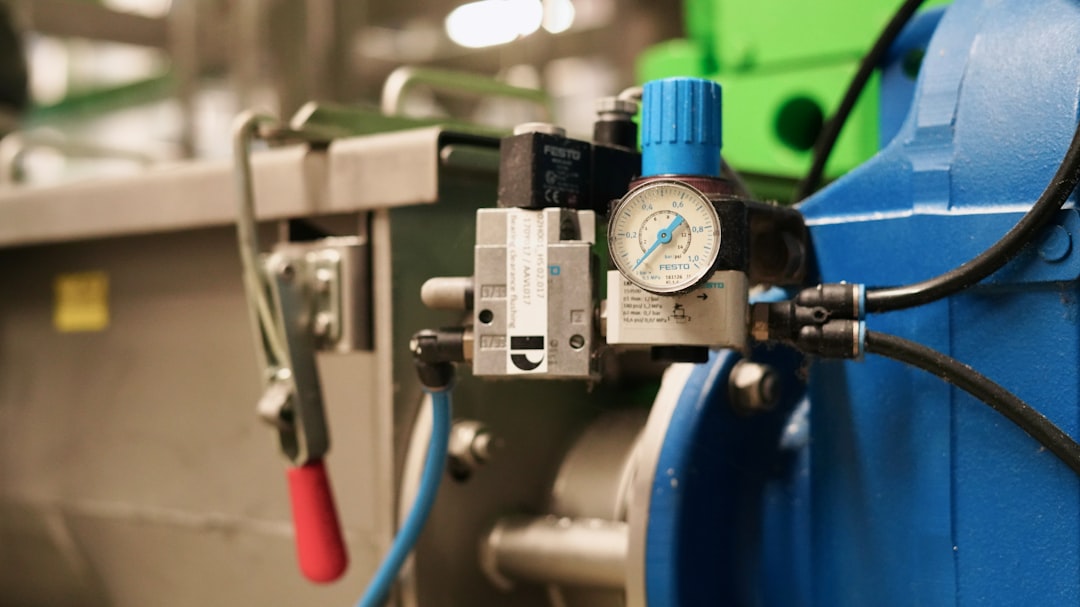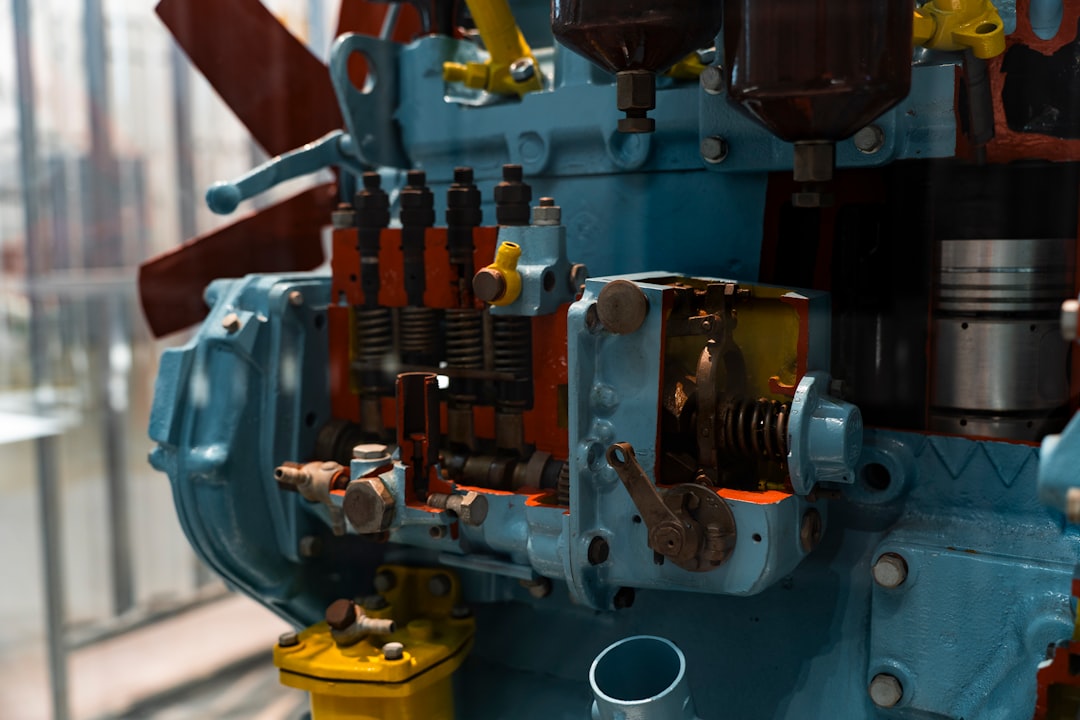

Engage prospects with a scan and streamline customer engagement with FREE QR code marketing tools by Sona – no strings attached!
Create a Free QR CodeFree consultation

No commitment

Engage prospects with a scan and streamline customer engagement with FREE QR code marketing tools by Sona – no strings attached!
Create a Free QR CodeFree consultation

No commitment
The shift toward industrial automation has made valve automation service providers critical players in sectors ranging from oil and gas to water management. These companies deliver valve automation solutions that guarantee operational reliability, process efficiency, and safety compliance to ensure seamless plant performance. As industrial plants modernize, teams need on-demand access to accurate documentation, service pathways, and compliance data in the field and at the office.
Despite significant advancements in valve management systems and valve automation technology, many providers still face persistent gaps between their digital initiatives and the analog, disconnected touchpoints within field and customer operations. Paper-based workflows such as distributing valve manuals, tracking maintenance, or registering service requests create inherent risks. High-value prospects or product users may interact with assets in ways that never reach the CRM, anonymous site traffic might indicate intent but remain invisible, and outdated records can result in missed opportunities for engagement or compliance.
QR codes offer valve automation service providers a practical tool to connect physical assets with digital resources. By digitizing access to documentation, compliance records, and customer support journeys, QR touchpoints capture valuable behavioral data and create measurable improvements across asset lifecycle management and customer retention. With the help of platforms like Sona QR, providers can generate dynamic, trackable codes and connect scan activity to CRM and analytics for real attribution. For practical ideas, explore Sona QR’s use case library. This guide explores how QR code deployment can streamline workflows, uncover new revenue opportunities, and elevate the field and customer experience in valve automation service delivery.

QR codes present a modern approach to connecting physical devices and digital outcomes. Many valve automation providers struggle with missed opportunities because critical asset, customer, or prospect interactions are not tracked, resulting in incomplete CRM records and lost follow-up potential. Replacing analog binders, paper forms, and static labels with QR-powered touchpoints gives teams real-time visibility into what customers and technicians actually do in the field.
A practical rollout focuses on the moments where users need help or information. Place codes on assets, tooling cases, inspection stickers, training materials, and service invoices, then route scanners to content tailored to their intent. When paired with dynamic content and analytics, QR codes become a reliable onramp from field activity to digital workflows, enabling faster resolutions, better compliance, and measurable engagement.
A digital transformation using QR codes empowers providers with real-time data and a more comprehensive view of the customer journey. This approach combats issues like anonymous traffic, incomplete account profiles, and disconnected field interactions.

Valve automation service providers routinely manage complex environments where critical information must be accurate, accessible, and auditable. Yet documentation and service pathways often remain fragmented across binders, PDFs, email threads, and tribal knowledge. Field teams can lose time hunting for the right document version, while customers may fail to register assets or request service because the process is unclear or cumbersome.
QR codes help address these challenges by putting digital workflows in the exact physical context where they are needed. A scan can deliver a login-free experience that surfaces the right resource instantly. Using dynamic QR solutions like Sona QR, teams can update destinations without reprinting labels or manuals, capture scan analytics, and trigger downstream actions in CRM or support tools.
Real-world examples include QR codes on valve actuators that open asset profiles, inspection stickers that link to calibration checklists, and service tags that route to mobile support. These touchpoints turn one-off interactions into trackable, data-rich engagement that builds relationships across the asset lifecycle. For broader operational context, explore ABB’s process automation.

Different QR code formats map to different goals, from connecting people to information to automating communications. Valve automation service providers can mix and match formats based on the task and the physical context of the scan. Dynamic codes are especially valuable for this industry because they allow destinations to evolve as assets move through their lifecycle.
When choosing a format, consider whether the action should be one-to-many, like a general documentation portal, or personalized, like a service request pre-filled with an asset ID. Also consider the environmental conditions of scanning in plants, such as low light, dust, and curved surfaces where labels must remain scannable.
Dynamic, editable QR codes should be the default for most industrial use cases. They allow teams to update destinations post-deployment when product versions change, new regulations are released, or support workflows evolve without replacing physical labels.
Growth often hides in the offline moments where customers and technicians interact with your assets. QR codes make those moments measurable and actionable. By mapping your highest-friction touchpoints and placing codes accordingly, you increase the odds that every interaction leads to the right digital outcome and a follow-up signal for your team.
Start by auditing where lost opportunities happen. Do service requests arrive late or incomplete? Do customers fail to register warranties? Are audits delayed by missing documents? Use this audit to prioritize placements that address the largest cost or risk and that generate the clearest business value.
Aligning QR code deployment to high-interaction touchpoints ties every scan to audience building, retargeting, and measurable ROI. It also ensures that your analog surfaces become digital entry points that carry the journey forward. For product context in valves, see DXP’s TVS valve solutions.

Use cases should reflect the most common interactions across your asset lifecycle. Select a small set at first, then expand once you see consistent adoption. Each use case should have a clear owner, desired outcome, and a measurable success metric that ties back to revenue, cost reduction, or risk mitigation.
The three examples below map to frequent field actions and deliver immediate efficiency gains for operations and customer success. Each can be implemented with dynamic QR codes and integrated with your CRM or service tools for end-to-end attribution.
These use cases transform asset interactions into digital journeys. They also create opportunities for timely cross-sell or upsell, such as suggesting predictive maintenance services when a scan indicates frequent interventions. Start creating QR codes for free at Sona QR.
Each QR scan is a signal that reveals user intent, context, and stage. When you deploy multiple QR codes across assets, documentation, events, and billing cycles, you can segment your audience automatically and trigger tailored follow-ups. For valve automation providers, useful segments often emerge from differences in role, asset type, and lifecycle stage.
Start by tagging codes by intent. For example, codes on installation materials signal new ownership, while codes on inspection stickers indicate ongoing maintenance. Codes at trade shows reflect early-stage interest. Once tagged, scan data can be synced to your CRM and ad platforms to power nurture sequences, sales alerts, and audience retargeting.
This approach ensures remarketing and follow-up are anchored in real behaviors, not guesswork. Over time, you build a library of high-intent audiences tied directly to revenue-driving moments.
QR codes act as connectors across offline and digital campaigns. For valve automation providers, this means printed manuals, asset labels, trade show booths, and service documents can all feed a unified digital funnel. The effect is a consistent experience that shortens the path from interest to action and gives marketing and operations shared insight.
The key is to centralize code generation and analytics in a single platform. With Sona QR, you can manage all codes, monitor scan activity, and sync data with your CRM and ad platforms. This ensures that no matter where a scan occurs, the event contributes to a complete view of the customer and the asset.
By integrating QR codes across channels, you transform previously unmeasurable surfaces into performance media. The result is higher campaign efficiency and a tighter connection between field engagement and digital outcomes.
A structured rollout helps teams focus on outcomes and scale what works. Treat QR deployment as an iterative program that starts with a single high-value use case, then expands to additional touchpoints once you establish a baseline and operating rhythm. Align stakeholders early, including operations, safety, marketing, and IT, so QR-enabled workflows comply with plant standards and data policies.
Below is a five-step framework that valve automation service providers can use to plan, deploy, and optimize QR programs. Each step includes practical considerations to ensure scannability, user adoption, and measurable impact.
Start with the pain points that cost you the most time or money. Examples include lost service requests, delayed audits, or confused installation. Define a clear goal such as reduce time to service request by 30 percent or achieve 100 percent audit-readiness for Class A valves.
Choose between static and dynamic QR codes. Static codes are suitable for unchanging resources like a general safety poster. Dynamic codes are best for nearly everything else in industrial environments because they allow updating destinations and tracking scans over time.
Design for visibility, clarity, and scannability. Industrial settings present challenges like glare, dust, paint, curved surfaces, and varying lighting conditions. Your design choices should account for these realities and your brand standards.
Roll out codes where they will be most used. Prioritize placements that reach many users and solve urgent problems. Sequence deployments to minimize downtime and ensure staff are trained before go-live.
Use analytics to close the loop from scan to outcome. Instrument your journey so that you can see where users drop off and where they succeed. Treat your QR program as a living system that improves over time.
A planned, stepwise QR code rollout ensures asset interactions are captured and acted upon. Tying scan activity to business outcomes encourages adoption, secures budget, and creates a foundation for scaling the program.

Visibility into user engagement is a persistent challenge in field-heavy industries, where critical interactions frequently go unrecorded. QR codes bring these interactions online. With the right tooling, you can track a scan through to a service ticket, a replacement part order, or an upgrade consultation and prove how offline engagement contributes to pipeline and revenue.
For valve automation providers, the most valuable analytics connect scan behavior to asset health and customer intent. A surge in scans to troubleshooting content on a specific actuator model may signal an opportunity for a reliability program. High engagement with upgrade guides may indicate readiness for a retrofit proposal. Instrumenting these signals turns scattered activity into a revenue engine.
Sona QR captures the real-world scan event and Sona.com extends that visibility into revenue attribution. Learn how to measure impact with Sona’s blog post “The Essential Guide to Offline Attribution: Maximizing ROI Through Offline Channels” on offline attribution, compare models in Sona’s blog post “Single vs Multi-Touch Attribution Models” on attribution models, and see why precision matters in Sona’s blog post “The Importance of Accurate Revenue Attribution” on revenue attribution.
Scaling a QR program requires consistency, clarity, and a commitment to continuous improvement. As you add codes across assets and channels, standardize how you generate, track, and maintain them. Pair each deployment with a clear promise for the scanner and a back-end workflow that delivers on that promise quickly.
Invest in training for your teams and customers. A QR code is only as effective as the value it delivers to the person who scans it. Use concise CTAs, straightforward forms, and helpful content that respects the time and context of technicians and operators.
Creative deployment examples include annual inspection stickers that trigger instant compliance certificates and suggest scheduling the next maintenance window, or invoices that include a Scan to review service quality link that opens a two-question survey and offers to book a follow-up optimization audit.
Valve automation service providers that embed QR code strategies into every phase of the asset and customer journey overcome many of the pain points that hold back digital transformation. QR touchpoints solve for invisible prospects, anonymous engagement, outdated data, and fragmented campaign execution. They also create a living feedback loop that accelerates response times, improves compliance accuracy, and drives measurable ROI.
QR codes have evolved from a convenience feature to a core enabler of industrial digitization. By embedding QR-driven workflows into assets, documentation, and marketing channels, providers turn every field and customer interaction into a data-rich event. Platforms like Sona QR and Sona.com help teams manage codes at scale, connect scans to CRM and analytics, and attribute revenue to offline engagements. The right QR solution connects disparate workflows, bridges gaps in account data, and supports predictive maintenance, safety compliance, and customer-centric growth. Start creating QR codes for free at Sona QR.
QR codes have revolutionized valve automation service providers by transforming static maintenance and service workflows into dynamic, data-driven processes. Whether it’s streamlining access to critical valve information, enhancing technician efficiency, or enabling real-time updates on valve status, QR codes replace cumbersome manual steps with instant, mobile-friendly actions that drive operational excellence and reduce downtime.
Imagine technicians instantly accessing valve specifications, service history, and troubleshooting guides on-site—without delays or errors. With Sona QR, you can create dynamic, trackable QR codes in seconds, update information instantly without reprinting, and connect every scan to actionable insights that optimize service delivery and customer satisfaction. No more guesswork, no missed opportunities—just smarter, faster valve automation services.
Start for free with Sona QR today and unlock the full potential of QR codes to elevate your valve automation service to the next level.
Leading valve automation service providers deliver solutions ensuring operational reliability, process efficiency, and safety compliance across sectors like oil and gas and water management.
Valve automation services improve efficiency by automating service pathways, providing on-demand access to accurate documentation, and enabling real-time visibility into asset and customer interactions.
Key features include provision of digital workflows, safety and compliance support, integration with CRM and analytics, use of dynamic QR codes, and capabilities for predictive maintenance and asset lifecycle management.
They ensure safety and compliance by providing up-to-date regulatory materials, technical specifications, and safety protocols accessible through dynamic digital tools like QR codes that can be updated post-installation.
While the article does not specify exact costs, implementing valve automation with digital tools like QR codes reduces operational expenses by automating workflows, minimizing errors, and improving accuracy.
QR codes connect physical assets to digital resources, enable real-time data capture, reduce paper-based workflow risks, improve customer engagement, streamline service requests, and enhance compliance and safety.
They integrate by replacing analog workflows with digital QR-enabled touchpoints linked to CRM, valve management, and support systems, enabling seamless access to documentation, service forms, and analytics.
Latest advancements include dynamic QR codes for real-time updates, integration with CRM and analytics platforms, digitized service pathways, and tools supporting predictive maintenance and asset lifecycle monitoring.
By capturing scan data linked to asset usage and maintenance history through QR codes, providers can identify trends, schedule preventive maintenance, and improve asset lifecycle management.
Challenges include fragmented documentation, analog workflows, and disconnected field interactions; providers address these by deploying digital QR code solutions that enable seamless access to updated resources and real-time data capture.
Use Sona QR's trackable codes to improve customer acquisition and engagement today.
Create Your FREE Trackable QR Code in SecondsJoin results-focused teams combining Sona Platform automation with advanced Google Ads strategies to scale lead generation

Connect your existing CRM

Free Account Enrichment

No setup fees
No commitment required

Free consultation

Get a custom Google Ads roadmap for your business






Launch campaigns that generate qualified leads in 30 days or less.
